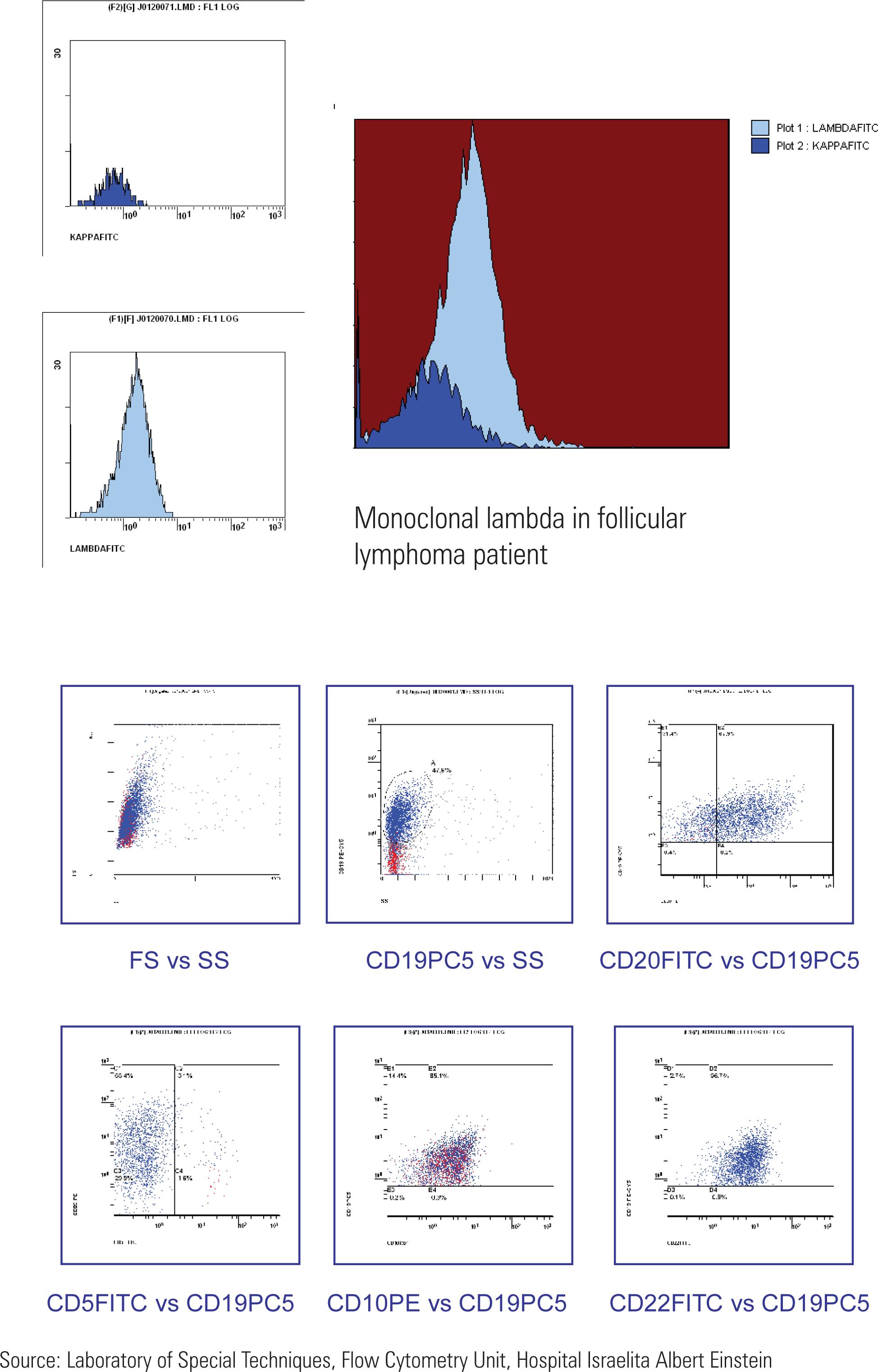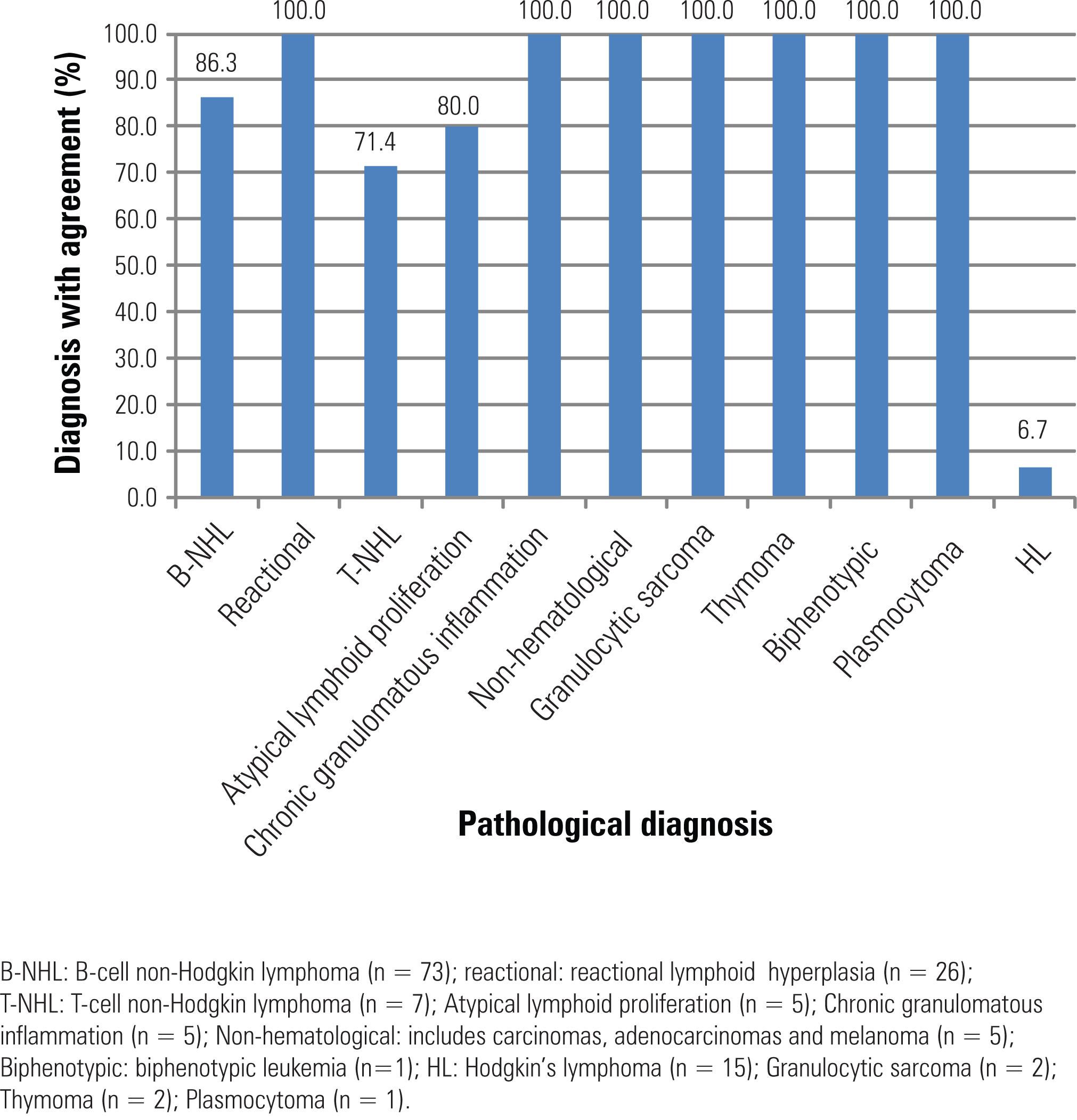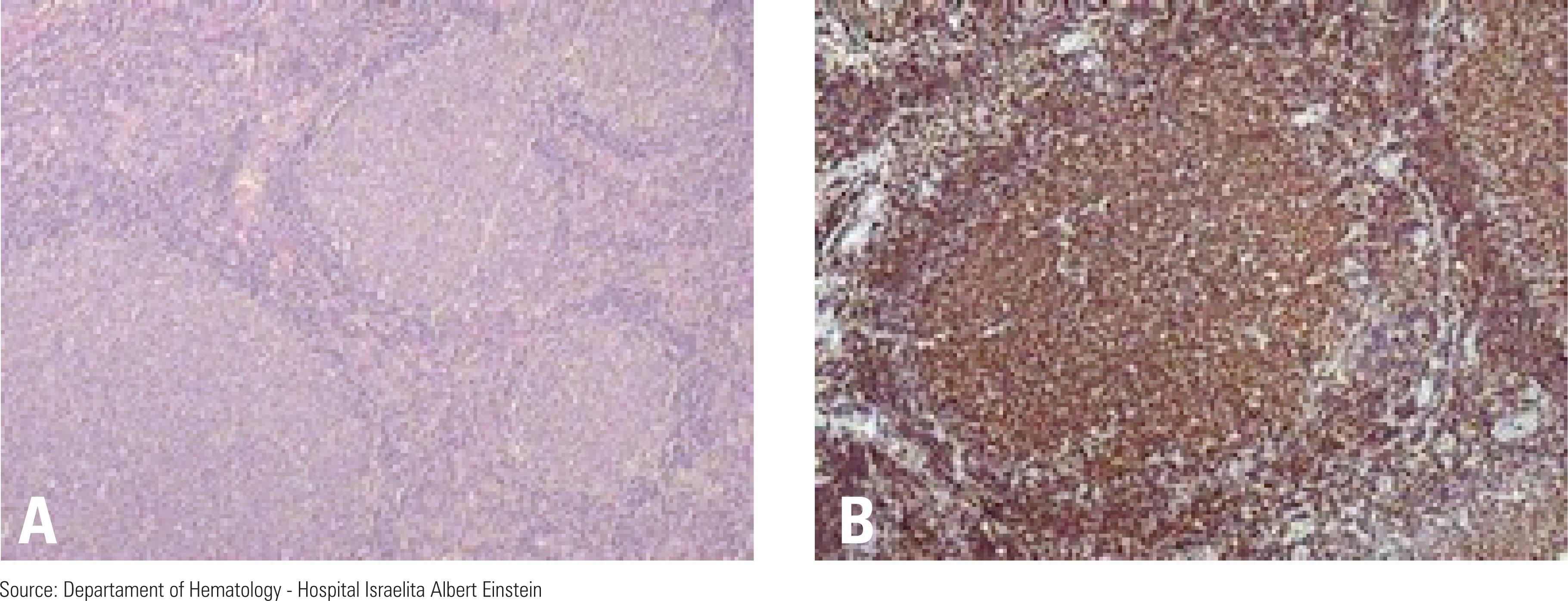Objective:
To demonstrate the advantages of correlating flow cytometry immunophenotyping with the pathology/ immunohistochemistry of lymph nodes or nodules in the diagnosis of lymphoproliferative diseases.
Methods:
A retrospective study was carried out of 157 biopsy or fine-needle aspiration lymph nodes/ nodule specimens taken from 142 patients, from 1999 and 2009. The specimens were simultaneously studied with fow cytometry and pathology at Hospital Israelita Albert Einstein. The specimens were prepared in hematoxylin/eosin, Giemsa, or monoclonal antibody stained slides for detecting specific antibodies for the purposes of pathology/immunohistochemical analysis. The samples were hemolyzed and marked with different monoclonal antibody panels for different antigens in fow cytometry immunophenotyping.
Results:
The diagnostic results of pathology/immunohistochemical studies and flow cytometry immunophenotyping agreed in 115 patients (81%), corresponding to 127 specimens, as follows according to the pathologic diagnosis: 63 patients with non-Hodgkin's B-cell lymphoma; 26 patients with reactive lymphoid hyperplasia; 5 patients with non-Hodgkin's T-cell lymphoma; 4 patients with atypical lymphoid proliferation; 5 patients with a chronic granulomatous inflammatory process; 5 patients with a non-hematologic diagnosis; 2 patients with granulocytic sarcoma; 2 patients with thymoma; 1 patient with byphenotypic leukemia; 1 patient with kappa plasmocytoma; 1 patient with Hodgkin's lymphoma. Subtypes of lymphomas could be classified by associating the two techniques: 19 patients with follicular lymphoma; 15 patients with diffuse large B-cell lymphoma; 7 patients with small lymphocytic B-cell lymphoma/chronic lymphocytic leukemia; 3 patients with mantle cell lymphoma; 1 patient with Burkitt's lymphoma; 1 patient with MALT type lymphoma; 1 patient with post-transplant lymphoproliferative disease; 2 patients with high grade non-Hodgkin's B-cell lymphoma; 1 patient with low grade non-Hodgkin's B-cell lymphoma not otherwise specified; 1 patient with Hodgkin's lymphoma; and 12 patients with B-cell non-Hodgkin's lymphoma not otherwise specified.
Conclusion:
Flow cytometry adds to the results of morphologic and immunohistochemical studies, facilitating a rapid and accurate diagnosis of lymphoproliferative diseases.
Lymphoma; Lymphoproliferative disorders/diagnosis; Immunophenotyping; Flow cytometry; Immunohistochemistry





